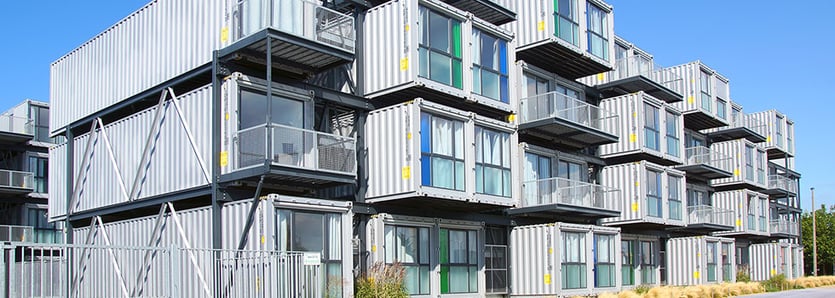Streamline your tender management and receive subcontractor and supplier quotes directly inside Cubit Select. Managing y...
Streamline your tender management and receive subcontractor and supplier quotes directly inside Cubit Select. Managing y...
For construction industry professionals, daily challenges like looming deadlines, tight budgets, soaring heat and flooding rain come with the territory. However, a rapidly evolving industry is making some of these traditional hurdles easier to overcome.
Modular homes are becoming increasingly popular as a way of improving efficiency, cost effectiveness and flexibility of builds. Below we explore the difference between modular homes and traditional construction, noting the benefits and drawbacks of each, and offering guidance about what may work for you.
Modular homes are houses built off-site, usually in an indoor factory-like setting. Often called factory-built, system-built or prefabricated, modular homes are completed in sections, according to specific plans. These sections are then transported to the site where they are assembled by builders and installed into the foundations.
Different companies offer their own styles of modular homes. But contrary to popular opinion, modular homes do not all look alike. They vary in size and design and can be easily customised. They can be made from the same materials as traditional constructions, and in many cases modular homes have a higher standard of craftsmanship.
And due to their high value of sustainability, they are considered an example of green building.
Modular homes have four main benefits:
1. Construction time – Modular homes are much faster to build than traditional constructions. Bad weather can cause significant project delays, and even after it subsides the site may not be safe for work. And how long that takes is anyone’s guess.
There’s also less likely to be on-site delays and complaints from neighbours when much of the work has been completed beforehand. It usually takes 12-16 weeks from choosing the design of your modular home to moving in.
2. Quality control and structural integrity – The controlled environment means that construction managers can more easily supervise work. With many different parts, this is very important.
Both modular homes and traditional construction are built to building regulatory codes, however, modular homes are also often fitted with steel chassis for enhanced durability. This means that they can better withstand stresses of transport to the site and high wind environments when the house is assembled.
3. Sustainability – The building industry has seen a shift in practices and materials as environmental concerns become increasingly important. Not only are sustainable materials better for the environment, they can also prove to be far more cost effective in the long run.
Modular homes often have passive features such as house orientation, good ventilation, insulation and shading built into the design stage. Add-ons like solar power and greywater systems are also easily included. Further, the fact that most of the work has been done off-site means that there is far less waste, saving you time and money.
4. Cost effectiveness – It’s usually cheaper to build a modular home. And because it takes less time, there’s less time the owner has to spend renting another property while their house is being built.
This is also important for builders on-site. Because 90% of the work has been done for them, they can work solidly for a shorter period of time, get paid, then move on to another job. This is especially important if the site is far from where they live, meaning costs of travel and accommodation (if necessary) are dramatically reduced.

Modular homes have a lot of benefits, but they’re not right for everyone. Here we will outline the three possible drawbacks of modular homes.
1. Restrictions on the land – Some areas have covenants on the land which specify that only brick homes can be built. These are often found in housing estates. Although modular homes can be built with brick facades, they usually raise the cost and reduce the sustainable value of the home, and so are often avoided.
2. Luxury builds – High end luxury builds can be incompatible with modular homes. This is because the features and design may not suit the materials and style. If this is the case, a traditional construction may be the best option.
3. Built up areas – Although modular homes take a lot of the hassle out of the building process, particularly built up urban areas can be difficult to negotiate when assembling the sections. For example, a skinny lane with multiple power lines may not be ideal to bring in pre-made sections as it could delay the build and escalate installation costs.
The environmental benefits of modular homes are particularly attractive to homeowners joining the green building movement. It’s clear that construction industry professionals need to stay up to speed with modern sustainable building practices as the industry evolves.
For a comprehensive look into the state of environmental construction practices today, download our ‘12 Tips to Building Eco-Friendly Commercial Property’ below:
There’s no doubt technology has changed - and continues to change - our lives an...
For construction companies today, staying up to date with digital advances is cr...
The world has changed and continues to change rapidly around us. Faced with this...


Ⓒ 2024 Buildsoft. All rights reserved